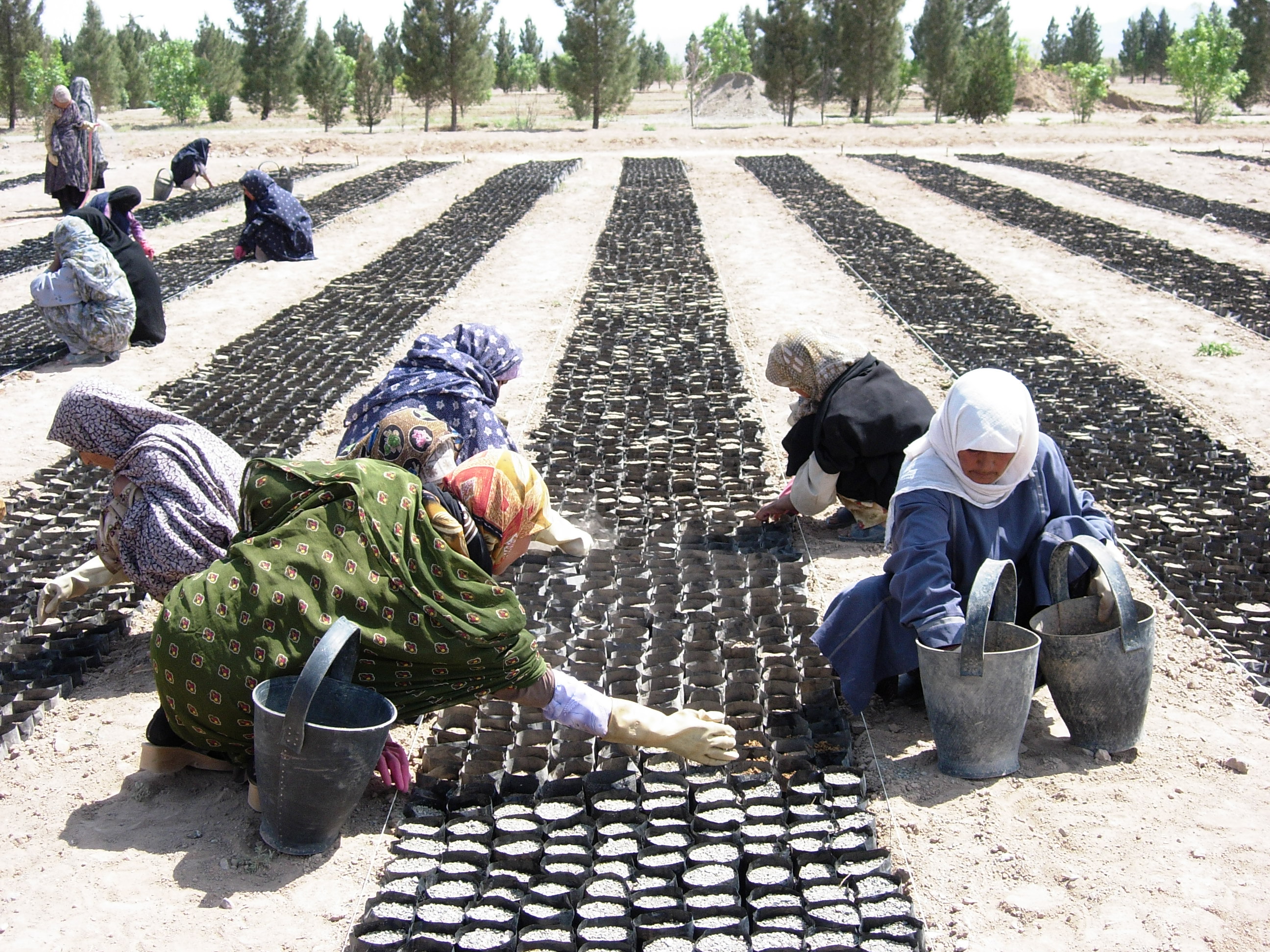Carbon Sequestration Project (CSP) - Phase III
The CSP was initiated in South Khorasan province (Birjand) and is now being replicated in 19 other provinces
Background:
The Carbon Sequestration Project (CSP) aims to sequester atmospheric carbon in arid and semi-arid areas of Iran and improve the socio-economic status of local communities. It uses a community-based natural resources development approach. The project aims to achieve three main objectives:
- Global level: provide a model to demonstrate that carbon sequestration in arid lands can be carried out in an economical way and so contribute to the potential of such lands to act as carbon sinks.
- National level: restore degraded natural resources.
- Local level: improve socio-economic status of local communities and enhance ecosystem services.
The first phase of this project was initiated in the South Khorasan Province with support from the Global Environment Facility (GEF) in 2003. Then during the second phase, the project was up-scaled and replicated across 18 provinces in Iran. Given its success and willingness of Forest, Rangeland and Watershed Organization (FRWO), In June 2017 a new addendum to the original project document and Government Cost-sharing Agreement (Phase III) was signed between FRWO and UNDP aiming to achieve participatory natural resources management and sustainable rural development in 5 new pilot sites in 4 provinces, in line with the previous phases. Over the years, the project has demonstrated both the carbon sequestration potential of significant quantities of marginal land and the potential of local communities to engage in sustainable rural development. The project has empowered local communities, generated sustainable enterprises, built local institutions, thus ensuring ownership by local communities. These communities have, in turn, assumed responsibility for the restoration, conservation and sustainable use of Iran’s limited land and water resources.
Key achievements to date:
- Upstream impact: The tenets of the Carbon Sequestration Project methodology has been integrated into the 6th National Development Plan.
- Afforestation: Improved the productivity of arid lands.
- Replication: The project is now being implemented in 18 provinces.
- Coverage: The project now covers 3,798,547 hectares. This includes 764 villages and 241,310 residents.
- Publications: Numerous publications and documentary films shedding light on the efficiency and effectiveness of the Carbon Sequestration Project have been published, thus facilitating its replication across Iran.
Achievements at the main project site (Birjand):
- Jobs: 577 permanent job opportunities were generated, particularly in doll-making and herbal distillation. Local dolls of Hosseinabad were recorded as national cultural heritage.
- Training: 400 training and extension programmes were held.
- Loans and micro-credit: 63 Village Development Groups (VDGs) and a micro-credit system was established. More than 2,400 loans were provided.
- Rehabilitation: Over 30,000 hectares of land was rehabilitated.
- Gender empowerment: Women have been involved in all project initiatives. Approximately one-third (8,600 out of 24,500) of the person-days of labour needed for restoration works was provided by female VDGs.
Achievements at replication sites:
- Village Development Groups: The number of newly-formed Village Development Groups (VDGs) has risen to 1,904 groups.
- Micro-credit Funds: 261 Micro-credit funds have been established.
- Rehabilitation: 19,086 hectares of rehabilitation measures were carried out by VDGs.
- Training: 26 capacity-building workshops on participatory natural resources management approaches were held for 910 provincial managers, social mobilization consultants and facilitators.

 Locations
Locations



